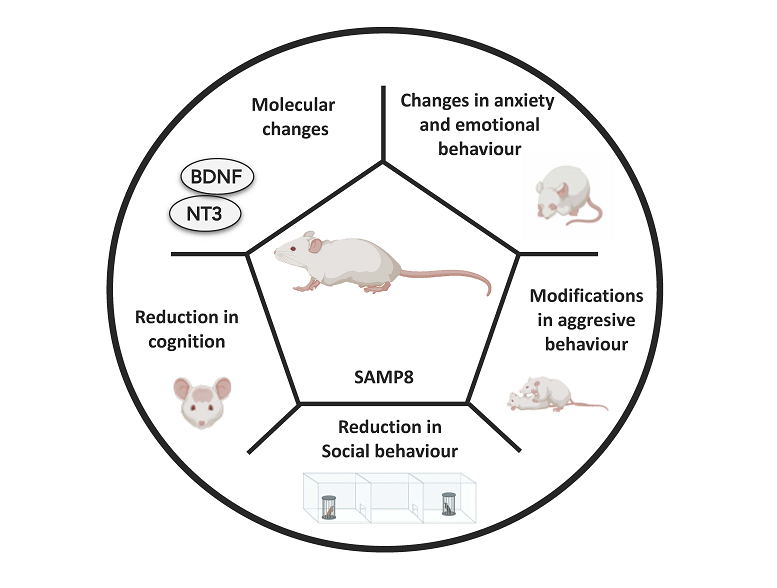Alzheimer’s disease (AD) is characterized by cognitive impairment and different non-cognitive deficits called “Behavioural and psychological symptoms of dementia” (BPSD) related to neurotrophin alterations, which differ from those presented in normal aging. Mouse models, both transgenics and inbreed mice models of AD, are a useful tool in understanding the underlying mechanisms of the disease. The SAMP8 (senescence-accelerated mouse prone 8) mice line was generated from AKR/J strain by Professor Toshio Takeda at the University of Kyoto. This strain exhibited a particular early-onset and accelerated aging phenotype. The present study characterizes and provides information regarding the non-cognitive, cognitive and neurotrophin alterations and their correlation, demonstrating the AD-like symptoms presented in older males SAMP8. The cognitive impairment presented was accompanied by a reduction in sociability and an increase in aggressive as well as anxiety behaviours. Furthermore, changes in two of the most important neurotrophins, such as brain-derived neurotrophic factor (BDNF) and neurotrophin-3 (NT3) were found. Thus, the present results reveal new insights in this useful inbred mouse model of neurodegeneration and AD, demonstrating the potential relationship between neurotrophin modifications, cognitive impairment and neuropsychiatric disorders (ND).

